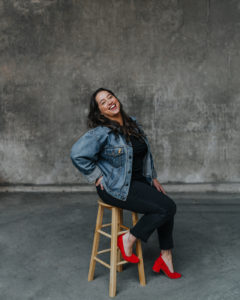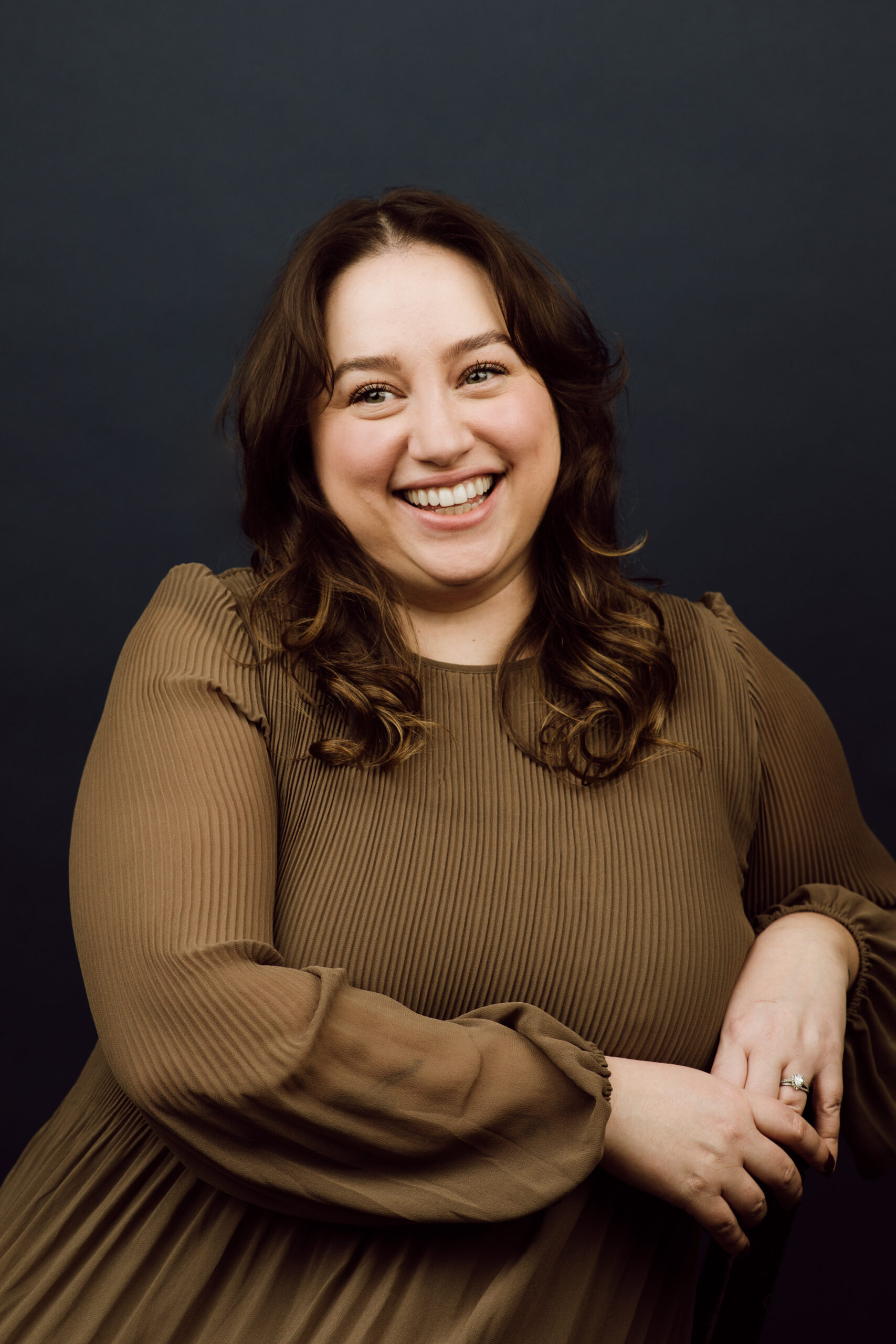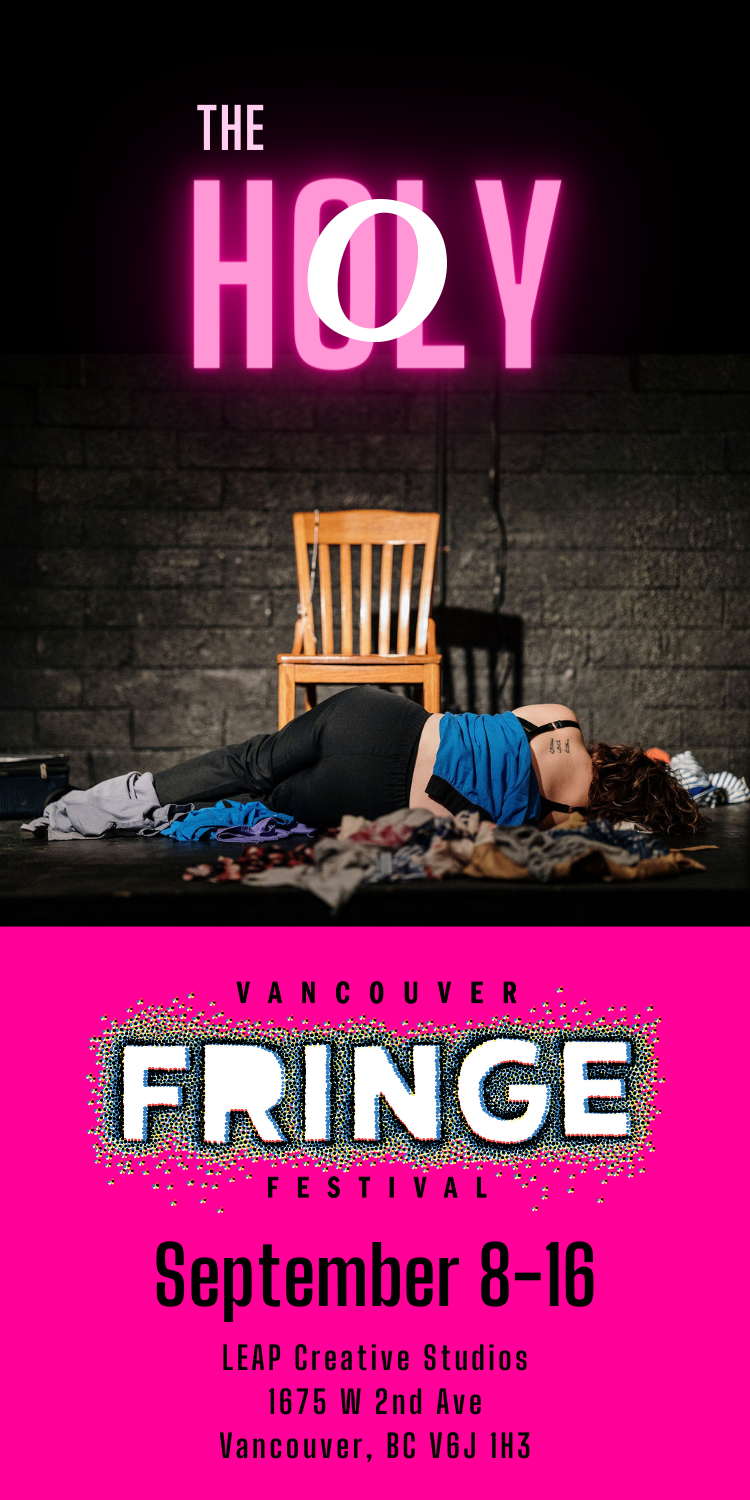Photo by Annie Spratt via Unsplash
By Brittany Tiplady
@yellowbird888
When it comes to my health I can be less of a “get shit done person” and more of a “how long can I pretend this doesn’t exist, and hope it just goes away?” kind of person. This attitude becomes most prevalent when I am busy and overwhelmed with work and life and Google calendars.
I am not what most would consider a traditionally “holistic” person.
I like green smoothies and vegetables as much as the next millennial, but when it comes to my daily palate, I have more of a Lorelai Gilmore thing going on. I eat burgers, lots of them. I eat meat (sorry!), I have Panago on speed-dial, and I love beer and wine and cocktails a plenty. I’m active when I have to be, or when I’m on a workout kick, and getting into a workout routine is a chore that I struggle to cross off my list. I don’t meditate (I’m trying! Nothing against meditation, I just don’t get it yet!) and I tried to replace coffee with matcha, but that lasted 36 hours. I am a dutiful practitioner of skin care, which is probably my only version of daily self-care. I do go to regular therapy sessions (shout out to therapy!), because I simply cannot operate in a personal or professional capacity if my mental health is askew, which often it is, but that admittedly is the extent of my commitment to health.
I know, I’m the worst.
So, as you can probably imagine, last summer when my then-fiance, now-husband, Ryan, noticed a golf-ball sized lump growing on my back, it was natural for me to say: “Cool! I’ll ignore this until I have the time to deal with it, which will be never!” In my defense, summer 2017 was a shit storm. To start, we were in the thick of planning our very expensive September wedding. I had spent the better part of nine months building a freelance career from scratch, working on Loose Lips Magazine, expanding, growing, acquiring the first client for Loose Lips Media, peddling wine samples on the side (promo gigs are very embarrassing, but very lucrative), and selling my unwanted wardrobe on Facebook to get by.
I did not have time for lumps and bumps, especially ones that were not causing a hindrance to my busy bee-ness and would not be seen in my wedding dress. Vain, but honest! And no matter how many times my sweet, sweet partner begged me to get it checked out, there was no way I was prioritizing a two-hour wait time in a clinic. And so we got married, and we honeymooned, and then the pain started.
When we returned from our New York ‘moon I was in incredible lower back pain. At first, I chalked it up to a funky airplane sleep, a week of walking in not-so-sensible shoes, and, if I may be so gratuitous, lots of newlywed vacation honeymoon sex, ayyyyy!
But after some hot baths, stretching, lots of Rub A535, and a warm yin class, I still couldn’t shake the constant agitation. At the time I was teaching ballet four to five evenings a week, and the consistency of the pain was affecting my job. And as you may have gathered, my work, whether it’s teaching dance or working on my media career, is high on my priority list. And when I cannot show up for my work, I am rocked.
The lump on my back sat right in the middle of my lumbar curve , directly in line with my spinal column. And it was getting angry. As the pain increased over the month of October, so did the size of the lump. Although it was most prevalent when I was hunched over, it became so inflamed that I began to feel it through my clothes. And so would begin six months of tactile infatuation, as I rubbed my lil’ intruder through my shirt, my hoodie, my jacket, all day longer wondering what the fuck was in my back, and why was I in so much pain?
By mid-October once we had been home from New York for a few days, the pain had become rather unbearable. It was like having day-two period cramps, constantly, radiating through my lower back and across my hips. While the lump itself did not hurt I could feel that it was putting pressure on some kind of nerve ending.
My usual daftness towards my health faded, and I started to become increasingly more agitated. I am very privileged to have access to extended health benefits through my husband’s work, and so I booked myself up with appointments.
First, I went to a chiropractor that came highly recommended to me through friends and colleagues. I was convinced that maybe this hard lump was a vertebrae out of place; some kind of old dance injury presenting itself ten years late.
My first mistake was booking this appointment with a male practitioner. While he did nothing sexually intrusive, I have some serious pent up trauma which means being treated by a male physician of any kind is very uncomfortable and frightening for me. This would be the theme of the next six months: fear, panic, frustration, and deep, unrelenting pain. The chiropractor paid no mind to my lump: he showed me on a demo-skeleton in his cold, Oakridge office that it was probably a smaller vertebrae out of place, and that it would go back into its rightful spot in no time.
“People come in here all the time freaking out about lumps and bumps but often they are nothing,” he said. I was sent on my way, with barely an adjustment.
The pain persisted.
Next, I saw a Registered Massage Therapist and gave her the full low-down of my mysterious back situation. Once exposed on the table, I could hear the hesitation in her voice as she gently told me, “I’m not a doctor, but this definitely is not a bone, or a fat deposit. I think you need to see a doctor, sweetie.” I remember staring at the floor through the massage table headrest. My eyes prickled with tears as she worked around the lump, kneading through my lower back muscles that had clenched into fists.
I made an appointment with a clinic near the dance studio in Richmond and went barrelling into the office with stories, and evidence, and some possible answers that I of course had scoured on Google. I hadn’t been to the doctor in years and I was surprised to see a timer on the computer.
My physician, a male, was kind but scattered. The moment I began my origin story, “So I was on my honeymoon in New York and when I got back..” his eyes darted to the timer. I had seen the waiting room: it was packed with sick people needing to see a doctor. I knew he was busy, but I was in his room, needing his care, and his eyes could only dart to the numbers racing on the computer. I had been in the room for three minutes and forty-seven seconds when he asked me to speed my point along.
I stood up, faced my back to him and pulled my shirt up, hunching over to really give the full effect. He guessed that my lump was most likely a lipoma, a common fat deposit that is harmless, squishy and easy to move around. I told him that I had already looked this up online, and the characteristics of my lump certainly didn’t fit the bill. Which he would know, if he took the time to examine it thoroughly. He thought that my back pain, as the lump itself did not hurt, was a separate injury and recommended physiotherapy.
He said to come back if the pain persisted, or if the lump had changed in size, in two weeks. My time was up. Five minutes and thirty seconds.
A few months later, Kristi and I attended our first Women in Media breakfast with the BC Women’s Hospital & Foundation CEO Genesa Greening. She talked about how women generally explain their symptoms narratively, and men generally explain their symptoms symptomatically. I was overwhelmed to have a definition of what had happened to me in that inaugural doctor’s appointment and in every single appointment to follow. I was hurried. I did not have time to describe my pain, I was put on a timer, and when that time I was up I was patted on the head and sent out to cry in my car.
Of course, guns blazing, two weeks later I went back to the clinic, this time armed with direct questions and demands for further testing. It’s now early November and I am now fully committed to solving this mystery. I was sent for an ultrasound and a spinal X-ray. The X-ray showed nothing, meaning that the lump was not attached to my spine (the bone), but the ultrasound was deeply concerning. The tech called two others to come and look at my ultrasound while all three of them marvelled at what was evidently something they had never seen. The results came back to the doctor inconclusive, but the possibility of cancer was now on the table. And the ultrasound results strongly urged that I seek further testing.
At this point, I became obsessed with my pain and my intruder and cancer. Dr. Google became my primary physician. Every night that I wasn’t teaching, when Ryan would leave for his graveyard shift at work, I would open Safari and tap away, screenshotting symptoms of spinal cancer and every possible tumour, benign and otherwise, that I could find.
I was on a steady routine of Rub A535 massages from Ryan, Advil, CBD, and bi-weekly RMT appointments. Eventually, I could only teach with my words so my assistant teachers had to demonstrate all of my classes for me while I sat at the front of the class and grimaced through each hour of the evening. In the office, I tapped at my computer with my heating pad practically attached to my body. Business was incredibly demanding, my freelance deadlines kept piling up, and I didn’t want to turn down work. I zombie-walked through the entire fall and winter season.
I am fortunate to have had friends and family rally around me. Kristi picked up every ounce of slack that I dropped, friends both locally and abroad checked in and remembered my appointment dates and offered rides and words of encouragement. My husband soothed my frequent outbursts of frustration and panic.
The thing about persistent physical pain is that it exhausts you beyond comprehension. I became someone that I did not like: irritable, forgetful, negative, and hysterical. Subsequently, I was feeling the most un-sexy I had ever felt. I sat all day, every day, unable to bear more than a few minutes on my feet, so naturally I began to gain unwanted weight. And I gained it fast. Along with my physical health, my mental health began to spiral. My sexual health did not exist. I suppose that’s how real narcissism starts: I thought only of my pain and my lump and that was it. There was no world outside of what was happening in my body.
I had been sent for a CT scan but my appointment was not until the beginning of December. It’s now mid-November, a month after the pain started, and I’m learning what “advocating for myself” really means. One evening after Ryan had gone to work, I lost feeling in my legs. By now the pain was 24/7, radiating throughout my lower back, and down my bum. I took a cab up the street to VGH, sat in the emergency waiting room, got out a book and prepared to camp out. When brought in to see a doctor I was asked by three nurses, all much younger than me, why I was there. They all looked confused, even irritated by my answers. “Have you tried taking an Advil?” they asked. “Why are you in the emergency room? Have you seen a regular doctor at a clinic? Is this an emergency?” Not being able to feel your legs, when you’re home alone was reason enough for me. But I also took this action so that I could get some answers. I was tired of waiting, tired of weeks in between appointments, I was tired. After waiting two hours on a bed, two different doctors came to check on me, but all of them as skeptical as the nurses. I think that they were concerned I was there for pain medication.
I am very sensitive to medication (even something as routine as cold medicine) and prefer to avoid it, especially narcotics, at all costs. I’m educated and scared of the damage that opioid-based pain medication can do and so this certainly wasn’t the purpose of my VGH mission.
Finally, they sent a female plastic surgeon to come look at my back. She gave me the time and attention I desperately needed and asked the right questions, and gave the right answers. “What are you scared of with this?” she inquired. I told her I was terrified of cancer, but mostly I just wanted answers and I wanted it out. She examined me thoroughly and gently responded with honesty: “I’ve never seen a lump like this before, I don’t want to tell you that it’s not cancer, because it could be, but from my experience, cancers are lumpy and this one is smooth and perfectly round. Also, if it was cancer, typically you would be in direct pain on the mass. But I want to send you to see another plastic surgeon and specialist at St. Paul’s, as soon as possible.”
I saw Dr. Neil Wells at the beginning of December at St. Paul’s Hospital. Once again the appointment was cold and quick and inconclusive. He suggested that I take my CT-scan appointment, and when I received one, an MRI appointment, and once those tests were done he could make a better assumption as to what this thing was. But the common theme amongst physicians remained the same. He didn’t think my back pain was anywhere near related, and my pain, which was now causing exceptional nausea and discomfort, was not on the table for discussion.
Most people have to wait half a year or more for an MRI, but due to the strange nature of my unknown mass and the threat of possible cancer, I got an appointment lined up for January, just after my 27th birthday.
After those scans, sometime in February, I went back to Dr. Wells for my results.
He plucked the scans from my file so that we could examine them together. I finally got to see the beast: it quite literally resembled a golf ball lodged inside my back, hovering above my spine. Smooth, round, white, and fucking weird. And once again, the results were inconclusive. His number one hypothesis was that my mass could be something called a Dermoid Cyst: a benign tumour straight out of a Grey’s Anatomy/Stranger Things crossover that grows its own eyes, teeth, and hair. Or, it could be a rare cancer that presented itself differently.
I became visibly upset in the waiting room as my surgeon announced that he still did not know what my tumour was, and he would need to send my scans to a colleague at the BC Cancer Agency for review. I was furious that this step had not already been taken. That I had gone in for an appointment that was once again inconclusive. I was told I would hear back from his office in a few weeks as he was unsure if his colleague would be on vacation. I left the office in tears and called my mom.
I received a call two days later with a scheduled date for my surgery. Whoever had looked at my scans wanted my mystery tumour out immediately. I felt a visceral reaction of relief followed by knee weakening fear.
I walked into my March 1st surgery at St. Paul’s with no idea what to expect. I was told the procedure would be under thirty minutes, and just like going to the dentist. And I would be awake. I was given no post-op instructions, except that I would not be able to lift anything heavy for a few weeks to follow.
My husband waited in the hallway as I was called into what looked like a doctor’s office of my nightmares. Under yellowed lights, I laid face down on the operating table/bed as Dr. Wells, donning a serious pair of surgery specs, explained that the anesthetic would hurt much more than the procedure itself. I clasped the nurse’s hand, and focused my eyes on the label of her scrubs (they were Grey’s Anatomy brand. Actually. And you know what? I felt some comfort that a piece of my favourite TV show was with me in this weirdly traumatic appointment), as QMFM played on a 1990s stereo, that looked like it was also last dusted in the 1990s.
The pain of the anesthetic was all-consuming. It was as if a million spiders had been released into my body while I was being slowly lit on fire. Dr. Wells worked up a sweat, grunting and coaxing my mystery tumour out of my back. The tumour was deep, and much tougher to extract than he had planned. I needed four more doses of anesthetic, yelping each time I could feel him cauterizing my surrounding blood vessels and nerves.
My eyes darted between the Grey’s Anatomy label, and the dusty stereo. Sarah McLachlan’s “In the Arms of an Angel” played (a QMFM go-to), and I thought, well, if I die on this godforsaken bed table at least it was to the appropriate tune.
Dr. Wells removed the tumour like a fisherman catching a prize game. “CAN I SEE IT?” I asked. The nurse let go of my sweaty hand, and stepped out of the way so that he could dangle it in my face. From my peripherals, it was exactly how it looked in my MRI scans: white, round, and the size of a golf ball. No eyes or teeth, and no hair.
After I was stitched up, Dr. Wells explained that he could tell that the tumour most likely was pushing on my nerves, which was “probably the cause of my persistent back pain,” (HELLO! I HAD BEEN SAYING THAT FOR SIX MONTHS) but it would never really be determined until I healed. I was told to take Advil for the pain, avoid physical activity for a month, and that I would be back to normal by April but the incision would take up to six months to fully heal. From what he could tell, the surgery had been successful, but his diagnosis of the tumour was still inconclusive. To his expert eye it looked benign, but still strange and nothing like he’d seen before. There was a chance that I would still need a second, more in-depth, exploratory surgery. He assured me that if my tumour was malignant, that I would only need routine treatment.
I left his office, to a very worried looking husband (who spent the next two weeks playing nurse and bandaging my busted back), and began a whole new waiting game.
Around four weeks later, while working on my laptop at Cartems, I received a call from Dr. Wells himself. When I heard his voice on the phone, expecting his secretary, my heart dropped to my stomach Hellevator style. My results were in: my mystery tumour was a very rare, benign tumour called a Nodular Fasciitis. It presented itself as a very rare, very dangerous sarcoma, and so my results took longer to diagnose. I was healthy and cancer-free, no additional surgery needed, just acute care for my body and diligent self-examination. I cried into my donut and called my family, my husband, and Kristi.
I spent the rest of the spring walking around in a euphoric state of relief and gratitude. I had my body back, once healed from the operation itself (which took weeks longer than prescribed), my mind was free from distraction and fear. My back, while sensitive and weak, was no longer in relentless, exhausting pain. I felt so much lighter. I felt very fortunate, and very proud of my strength and advocacy, and I felt grateful for my body and the trauma that it had endured for six very tumultuous months. I celebrated with a trip to Sedona and meditated on the miracle of health.
And then the anxiety began.
I wish that I could end this essay at the paragraph above but my health “journey” is still ongoing. I’m angry that I was not believed, and I’m angry that my very real pain—and very real tumour—was ignored. My indelible pain and quest for adequate healthcare changed my perception of the medical system and the lens used in the treatment of women.
Since recovering, I’m learning to have a whole new relationship with my body and it has been a gruesome, terrifying road. After nearly eight months total of immobility and recovery, I now walk around in vessel that I do not recognize. A body that doesn’t feel like mine, a body that is weak and tired and foreign. Since emerging from my euphoric state of gratitude, I physically collapsed, and inevitably, my mind followed. I am scared to move, scared to feel pain again; I no longer trust my strength, physical and otherwise. I’m learning, from my therapist, that recovery is not linear, and it is not always resolved from a simple day surgery. It is a multi-faceted road full of detours and bumpy paths.
I’m learning that advocacy, while often coupled with so much frustration, is essential. Without a strong voice, even if it’s emboldened by fear, your pain is relegated. I’m learning to have patience with myself, I’m learning to move without fear and to breathe while doing it. I’m learning to feel gratitude for days without pain, because now there are many.
And I’m working to get back to that place of euphoria. I’m trying to make a home in this new body, and I’m trying to treat her well. Sometimes that means saying no to three pastries a day, and sometimes that means carrying a rose quartz crystal in my pocket and taking a ballet class. And I am working on saying thank you. Thank you to my body, a weathered but tough vessel that continues to carry me, despite my anxiety, through pain and through joy and through the many chapters of this nonlinear, very complicated, sometimes beautiful life.
Addendum: I know that this story comes at the hand of immense privilege. As a white-passing cis woman, I know that my experience, while still difficult, is a watered down version of what many unwillingly face for years and years. Living in Canada meant that my healthcare was covered under my basic MSP and our extended benefits, and the financial burden of this experience, with the exception of time lost from work, was minimal. I know that chronic pain is just that: chronic, and womxn, specifically womxn of colour, are often not believed or treated, and the fight for adequate and timely healthcare is a lifelong battle for many. I am so, so lucky to have advocated alongside my husband, and my family, and to no longer live in chronic physical pain.

Brittany Tiplady is a writer, editor, former ballet teacher, and the co-founder of Loose Lips Magazine. She loves the indoors, fast wifi, collecting maps, and a generous glass of red wine. She’s a self-proclaimed wizard of time management and a notorious loud talker with a penchant for all things Internet and pop culture.




